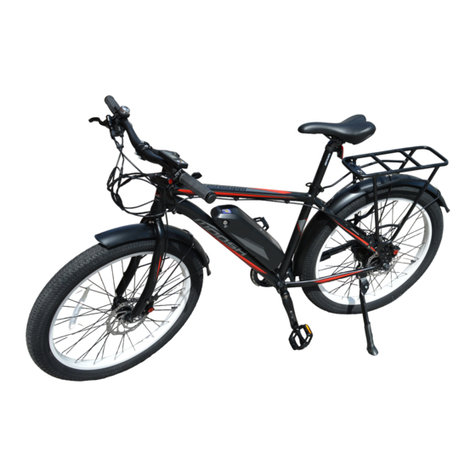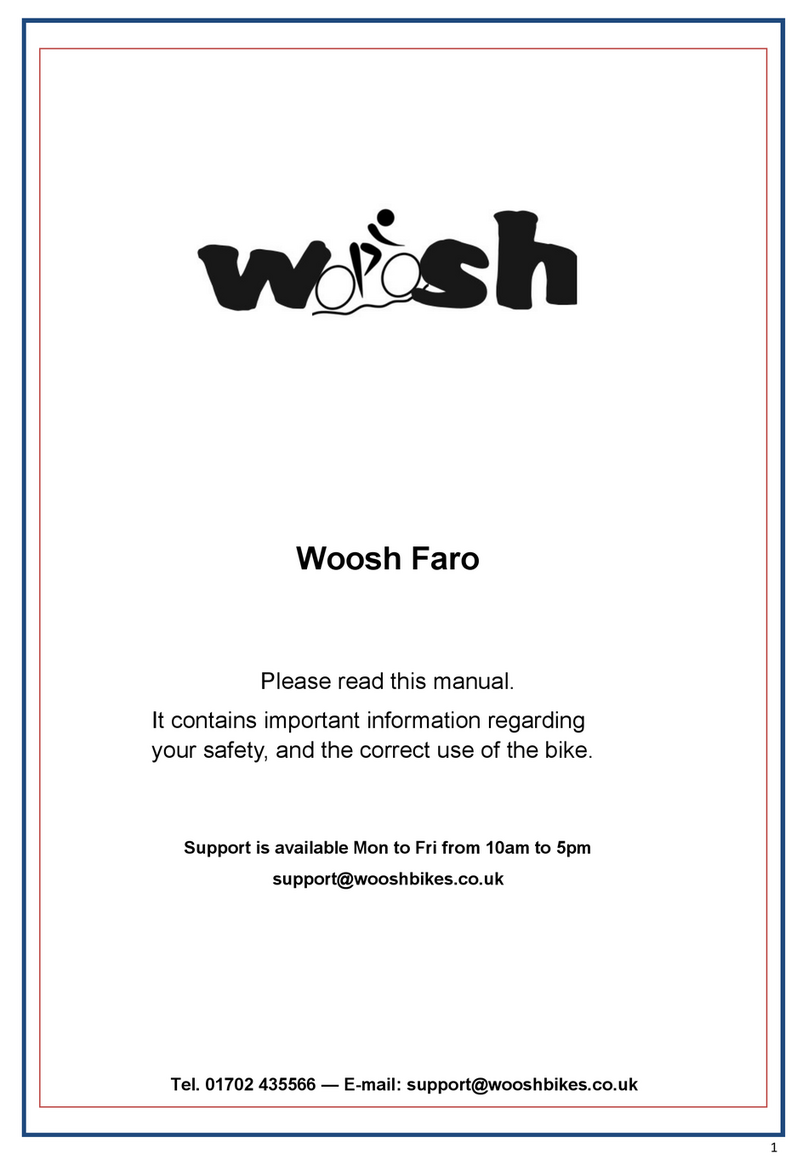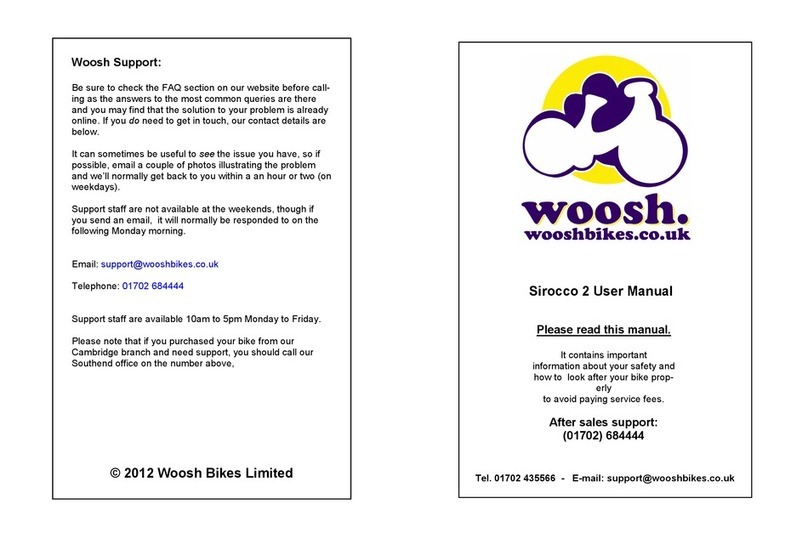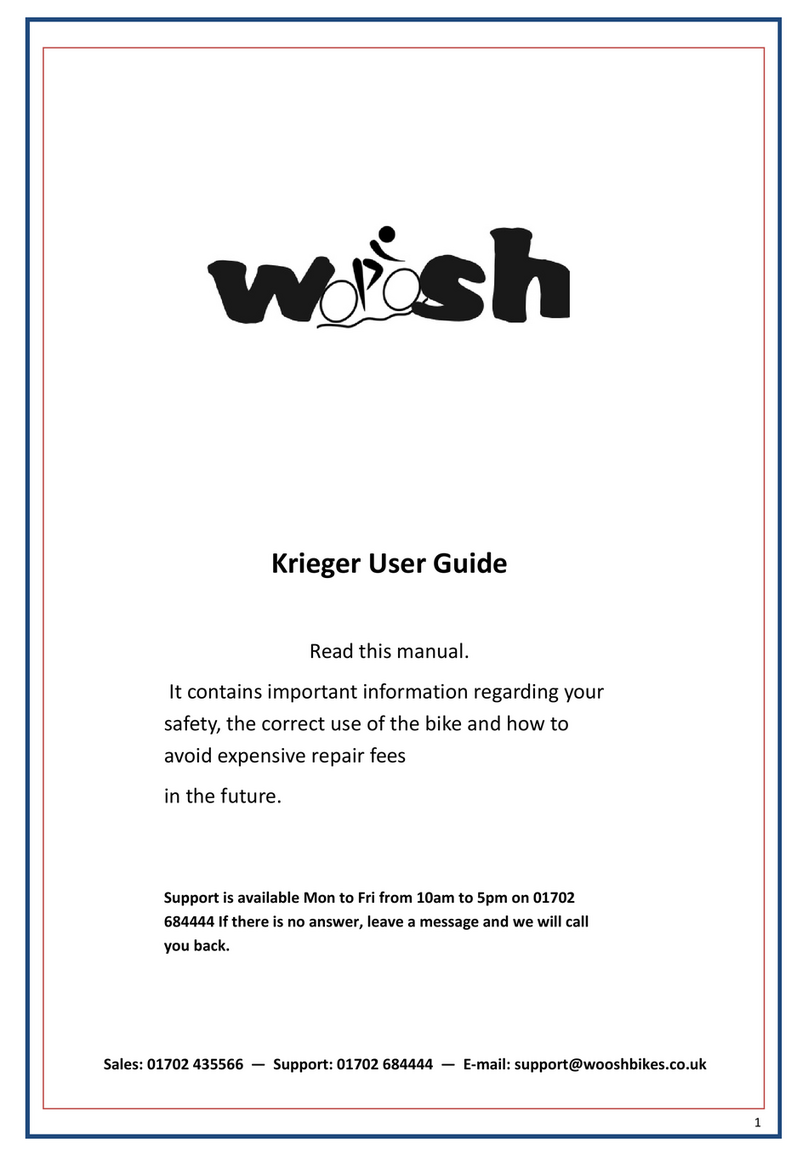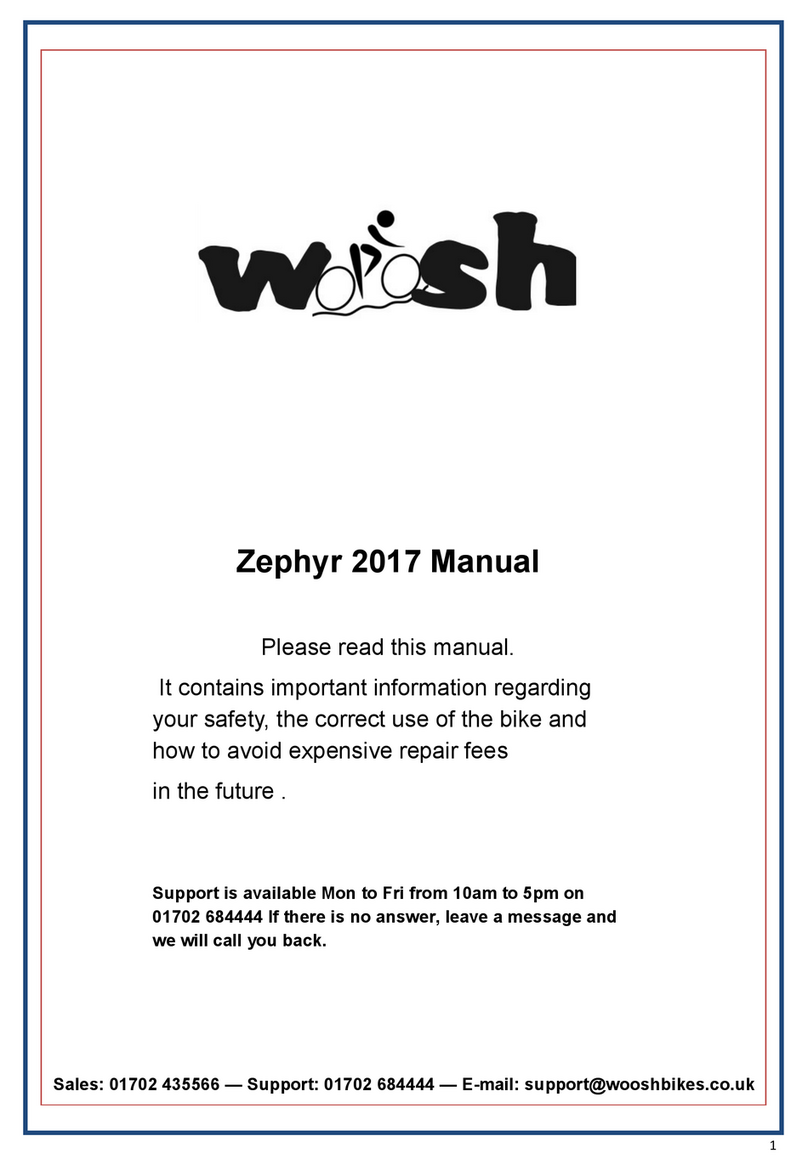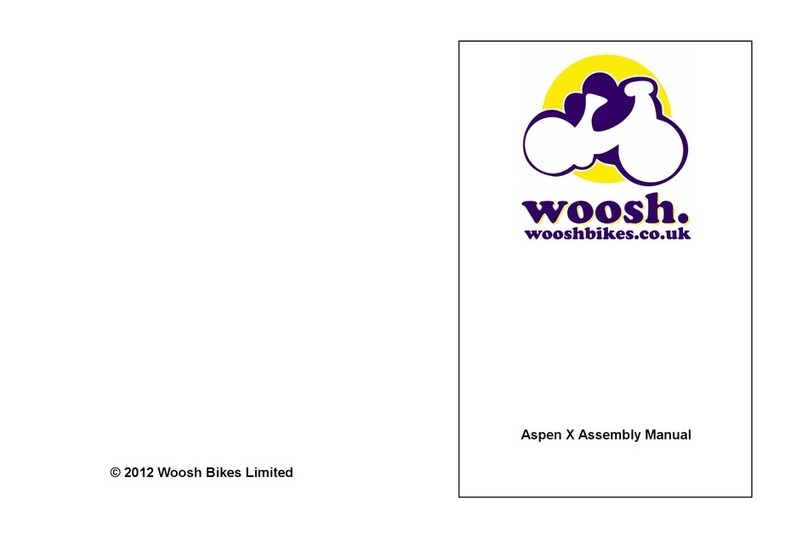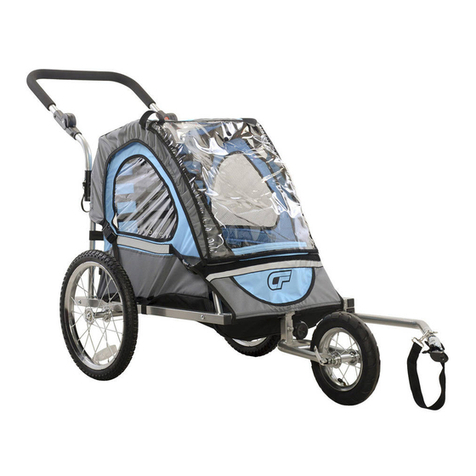8
Battery care:
The Camino comes with a modern light-weight lithium battery.
Some care is needed to ensure your battery performs at its best and lasts as long as possible. All batter-
ies age over time, meaning that the range will gradually decrease as the battery gets older. To ensure that
you get the most from your battery, follow the instructions below.
Charge the battery as and when required, but try not to run it completely flat. If the bike is not going to be
used for an extended period, such as over the winter, run the battery down to around two thirds full, but
every few weeks, charge it for around 10 minutes or so.
DO NOT charge the battery in extremely cold conditions.
General battery care:
Do not attempt to open the outer casing of the battery.
Do not attempt to repair the battery.
Do not immerse the battery in water.
Keep the battery away from children.
Do not drop, pierce or otherwise damage the battery.
Ensure the battery is not exposed to temperatures above 55 degrees Celsius or extreme humidity.
Do not use the bike in an environment where temperatures are below minus 5 degrees Celsius.
Important—Battery Safety:
You should have received a separate leaflet regarding your battery. If you did not receive this, call
us immediately on 01702 435566 and we will arrange for one to be sent out to you.
Important:
Although our bikes are checked prior to despatch, you must fully inspect your bike again yourself before
riding it, and satisfy yourself that it is correctly assembled and safe to ride. If you are not experienced and/
or are not absolutely sure about any aspects of your bike, you should take it to your nearest bike shop to
have it checked before riding it—at your cost.
Before riding your bike, check the tyre pressures. The maximum tyre pressure is shown on the sidewall of
the tyre, but around 55psi would be considered normal, but perhaps a little more or less depending on
your weight.
Check that all fixings and major components are tightened sufficiently. Check all nuts, bolts, rear carrier
fixings, crank-bolts, handlebars and seat-post/saddle etc.
You must also ensure that your brakes are working correctly before you ride the bike. If you need to ad-
just your brakes, refer to the “maintenance manual” that came with the bike. If you prefer, you can have
your local bike shop adjust them for you. The brakes are very similar to those you would find on a regular
non-electric bike and so any bike shop should be able to adjust them for you.


